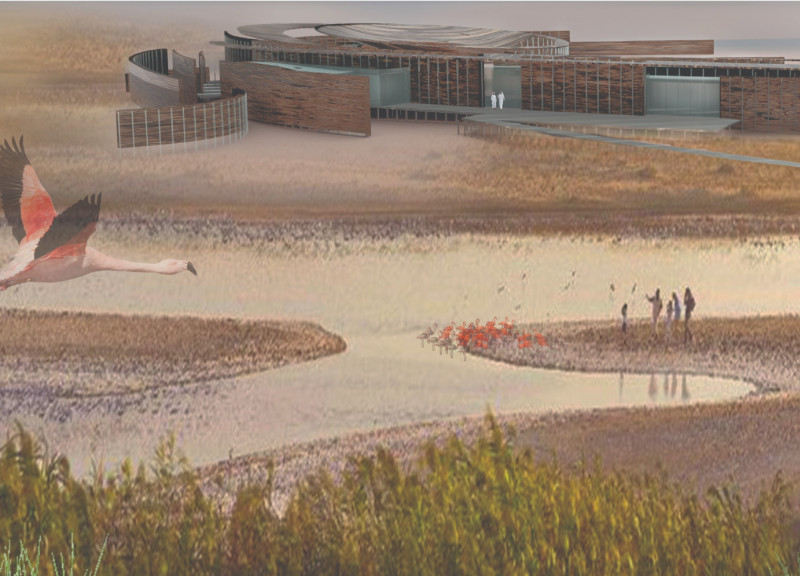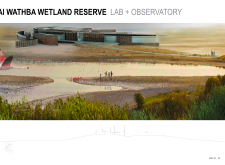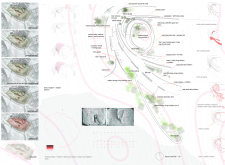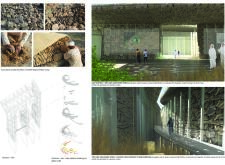5 key facts about this project
The AI Wathba Wetland Reserve Lab + Observatory is located in the Wathba wetlands and serves the purposes of ecological research and community education. The design emphasizes a connection with the surrounding landscape. It features multiple zones aimed at exhibitions and educational programs, allowing visitors to engage with the local ecosystem in a meaningful way. The overall concept integrates the natural environment into the experience, creating spaces conducive to both learning and enjoyment.
Site Organization
-
The layout is organized into specific areas that include various wetland ecology living exhibitions. These areas invite exploration while providing practical facilities for researchers. A network of trails guides visitors through the space, leading to important features such as observation towers and bird hides. These elements encourage direct interaction with wildlife and promote an immersive experience in nature.
Materiality and Environmental Strategy
-
The choice of materials is important for the project’s sustainability. Cavity walls are used for mechanical systems, which helps improve energy efficiency. Sarooj is selected for gabion walls, allowing for passive cooling and light filtration. This choice reflects local building traditions and enhances the overall environmental quality of the site while addressing climate considerations.
Functional Spaces
-
Various functional spaces include an exhibit lobby, café, and training lab designed to engage the community and support educational initiatives. The main entrance courtyard functions as a welcoming area for visitors, providing essential amenities and access points. Each space is designed with purpose, encouraging interaction and facilitating learning.
Visitor Experience
-
Observation decks and outdoor seating are strategically placed to enhance visitors' connection with the wetlands. These areas provide clear views of the ecosystem, fostering moments of reflection. By combining quiet spaces for contemplation with interactive exhibition areas, the design supports a comprehensive understanding of the rich narratives present in the wetland environment.
Elevated platforms allow visitors to take in the landscape, drawing attention to the intricate details of the natural world surrounding them.





















































